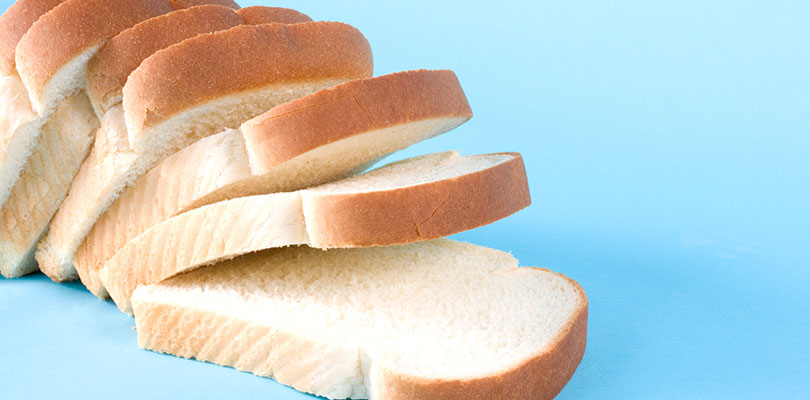Photo Credit: Stacey Newman / iStockPhoto.com
Getting to the Bottom of the White Food Stigma
Color is an important aspect of life and it will influence your choices more than you might imagine. When it comes to food, the brightest, most saturated dishes generally win over attention. We’re also taught that colorful equals healthy, and white means the opposite.
“White foods” typically refer to things like white bread, pasta, refined sugar and white rice — simple, refined carbohydrates that are very easy for your body to process. These white foods have been shown to undercut your healthy efforts in a number of ways, but as with most things, it’s important to resist the urge to generalize.
In fact, white foods aren’t unequivocally terrible for you. Once you know how different types of carbohydrates can help or hurt, you can better manage the temptations of processed white foods, and choose the pale produce that can actually boost your health.
The Roots of the White Food Myth
The low-carbohydrate diets that lured health-seekers in the early 2000s might not have lasted, but they did leave a powerful legacy. Atkins and Sugar Busters used the same approach as other diets before them, and those that would come after: eliminate one specific food group to see incredible results.
For the low-carb diets, it was as simple as cutting out all processed and refined carbs, and in some cases, even limiting complex carbs in favor of more meat and fat. At the same time, studies were pointing to refined carbs as the foundation of the growing obesity epidemic in the country, and a major contributor to type 2 diabetes.
But research has continued, and today experts aren’t so sure if the lofty claims of low-carb enthusiasts are as accurate as once thought. In the end, carbohydrates are one of the three essential macronutrients, and are absolutely mandatory for good health.
It’s true that carbs packed with nutrients and fiber are better for you, but other carbs could have a place in your diet, too.
The Problem With Refined Carbs
A principle difference between processed carbohydrates and their whole-food counterparts is fiber content. White foods have been stripped of their outer husk, shell, or protective layer, which eliminates a good deal of vitamins, mineral and fiber.
Not only is the nutrient composition compromised, but the way the foods interact with your appetite and satisfaction can lead to unhealthy results.
It's Easy to Overeat Refined Foods
Since there’s less (or no) fiber, refined foods tend to be less filling, and that means you can eat more at one sitting without feeling full. They can also sneak into dishes and drinks much more easily than whole foods, like high-fructose corn syrup in juice and soda (and even gently flavored water).
Junk food isn’t healthy by any stretch of the imagination, so why does your body crave it? Why does unhealthy food taste good if we shouldn't eat it?
Simple Carbs Are Less Satisfying
Your body can absorb processed grains and refined carbohydrates quickly, converting them to blood glucose and triggering a release of insulin to handle the surge. This volatile blood sugar state will lead right back to hunger in just a couple of hours, and if you eat more simple carbs the cycle will continue.
Overly large portions and too-frequent snacking are major risk factors for obesity, which will lead to a host of other ailments. Ultimately, white foods feed both of these bad habits. On the other hand, if you can control your white food intake — taking in no more than 100 calories from sugar each day, and limiting processed flour products — you may be able to enjoy them occasionally.
All White Foods Are Not Created Equal
In general, “white” points to “refined,” and refined foods aren’t so great. However, when you condemn all white foods, you will miss out on some perfectly acceptable nourishment — and even some nutritional heavyweights.
The problem lies less in the color of the food, and more in the level of processing. Whole foods are always better choices, and these whole white foods are actually very healthy, conducive to weight loss, and great for energy:
Cauliflower
Cauliflower has become a trendy veggie, and for good reason: it’s loaded with vitamin C (a serving contains almost 80 percent of your daily value), vitamin K, and a range of minerals. It’s also super versatile, and can take on a range of flavors very well.
Also, many studies have linked cauliflower to cancer prevention — another reason to add this cruciferous vegetable to your diet.
Potatoes
While the orange-fleshed sweet variety has a higher dose of beta-carotene and vitamin C, their pale cousins aren’t devoid of nutrients. In fact, white potatoes bring fiber, 60 different phytochemicals and vitamins, and minerals like potassium — especially when you leave the skins on.
To top it off, potatoes make for low-calorie side dishes (a medium baked potato has about 160 calories).
Cabbage
From preventing cancer to reducing cholesterol, a bit of steamed cabbage can contribute more than you might imagine. Red cabbage is known for its vitamin K and vitamin C content, but the pale green variety brings a lot of other healthy compounds, including sinigran, which has unique cancer-fighting properties.
Fennel
Each raw fennel bulb contains seven grams of fiber and 27 percent of your daily potassium needs, with fewer than 100 calories. There’s a whole range of minerals in there, too, including copper, zinc, manganese, folate and selenium. Fennel is particularly helpful for maintaining bone health and lowering blood pressure.
Onions
Low in calories and high in anti-inflammatory compounds, white onions lift up ordinary flavors to new heights without adding anything unhealthy to the mix. Moreover, the chemical quercetin found in onions can ease arthritis pain, reduce the risks of heart disease and diabetes, and strengthen the immune system.
Doctors and nutritionists recommend a rainbow of foods for a wide range of nutrients, so try not to focus too much on a specific color, or swear off anything that isn’t vibrant and eye-catching. When it comes to produce, white is an important color, too.







